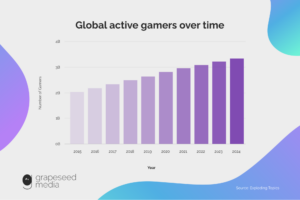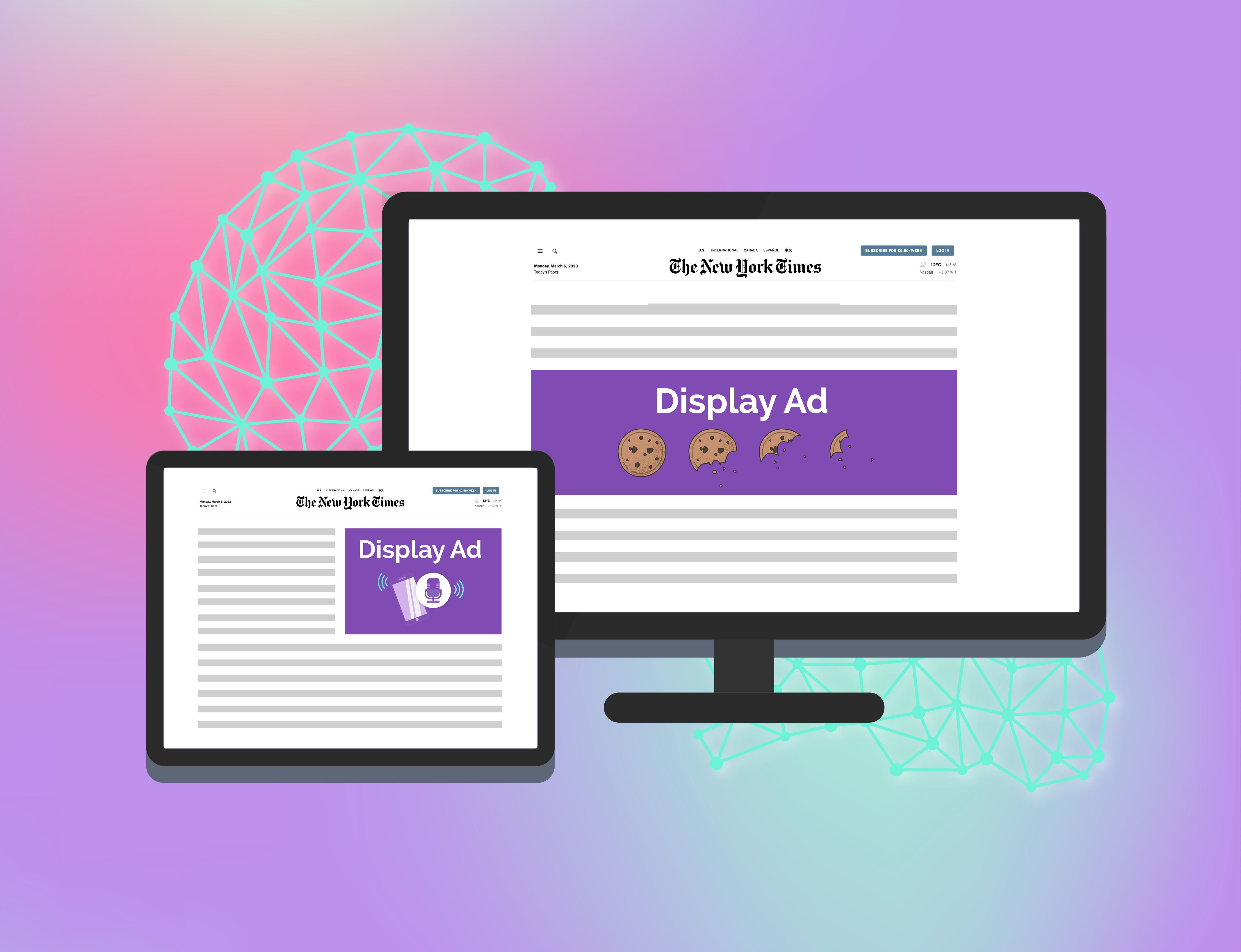As February 14th approaches, the air fills with more than just love — it’s an opportune time for marketers to launch Valentine’s Day ad campaigns, leveraging the fact that this celebration has transcended its romantic roots to become a global commercial phenomenon.
To illustrate, consider this: in 2023, US consumers spent $26 billion on Valentine’s shopping, with the average household spending $193 on the day’s celebrations, up from $175 in 2022.
For programmatic advertisers, the Valentine’s period demands early and meticulous planning. Starting campaign strategies as early as mid-January is not just advisable; it’s essential. This early start is crucial for a couple of reasons:
- Firstly, it allows sufficient time to develop and fine-tune your campaigns, ensuring they are as effective and engaging as possible.
- Secondly, and perhaps more importantly, it gives your campaign the runway it needs to gather momentum, reach your target audience, and ultimately drive substantial results by the time February 14th rolls in.
But why zero in on programmatic advertising for your Valentine’s Day promotions? Let’s find out.
Programmatic Advertising for Valentine’s: Why It Works
Programmatic advertising techniques are particularly effective for Valentine’s Day owing to several factors:
Reach the Right People at the Right Time
Due to its dynamic and data-driven nature, programmatic advertising offers real-time reach, precise targeting, and adaptability. You can modify and personalize your messaging based on detailed audience demographics, ensuring your message reaches the right audience.
Moreover, precise timing is pivotal for occasion-based advertising, and programmatic advertising stands out in its ability to nail this aspect. It allows you to accurately time ad delivery, which is essential for Valentine’s Day campaigns, where every moment counts.
Reach People Where They Are
Programmatic advertising isn’t confined to online spaces. It extends its reach to the physical world through channels like digital out-of-home (DOOH) ads. These ads are particularly effective in high-foot-traffic areas, enhancing message delivery.
Take, for example, the 2020 Valentine’s Day Campaign by London-based dessert brand, Gu. Their interactive, Tweet-driven “Love Notes” DOOH campaign involved cleverly adapted love song lyrics featuring the brand’s name.
The strategic placement of the ads in high-traffic areas like the Waterloo Station in London ensured that the message not only reached a broad audience but did so in contexts that maximized impact.

Beyond the conventional channels like display and DOOH, programmatic advertising also grants access to various platforms. This includes familiar ones like connected TV (CTV), as well as emerging channels such as virtual reality/augmented reality (VR/AR) and in-game advertising.
When leveraged programmatically, all these channels open up many possibilities for engaging with audiences in novel and immersive ways during occasions like Valentine’s Day.
Below, we explore these facets of programmatic advertising in more detail, illustrating how you can harness them to create a Valentine’s Day campaign that resonates with and captivates your target audience.
Techniques for programmatic advertising around Valentine’s Day
To effectively use programmatic advertising techniques for Valentine’s Day in 2024, consider the following specific strategies:
Leverage Augmented Reality (AR) and In-Game Advertising
AR creates a digital layer in the real world, allowing users to experience a unique blend of reality and digital content. This fusion can produce highly interactive and memorable experiences that significantly boost user engagement.
For example, a jewelry brand could develop an AR campaign that allows users to try on different jewelry pieces virtually through their smartphones. This immersive experience provides a practical way to visualize the products, ultimately influencing purchase decisions.
In-game advertising, on the other hand, taps into the vast and engaged audience of the gaming world. According to Exploding Topics, there are 3.22 billion gamers in the world, and this number is expected to reach 3.32 billion in 2024. In-game advertising is particularly effective because it integrates ads into the gaming environment in a non-intrusive manner, ensuring a user-friendly experience.

For instance, a chocolate brand could collaborate with popular mobile games to display their Valentine’s Day special editions within the game’s environment. This could be in the form of branded in-game items, special game levels, or interactive ads during game pauses. Such placements capture gamers’ attention and create a positive association with the brand by enhancing their gaming experience.
Implement Frequency Caps
Frequency caps prevent individual users from seeing the same ad too many times, thereby reducing the risk of ad fatigue and frustration. For instance, if a flower delivery service sets a frequency cap on its Valentine’s Day ad campaign, a user might only see the ad a maximum of three times a day. This strategy preserves the novelty and impact of the ad and also frees up budget to reach more potential customers.
Put another way, frequency capping ensures that a wider audience is exposed to your ads rather than bombarding a small segment repeatedly. This is particularly important during high-competition periods like Valentine’s Day, where capturing new audiences can be more beneficial than repeatedly targeting the same individuals.
Use Data-Driven Audience Targeting
Data-driven audience targeting is the backbone of effective programmatic advertising. It allows for precise segmentation of users based on various factors, including behavior, interests, and location, ensuring your ads hit the mark with the most relevant audience.
For Valentine’s Day campaigns, this might mean targeting individuals who have shown an interest in romantic movies, dining out, or have a history of purchasing gifts around this time of year.
Optimize Using Machine Learning Algorithms
Machine learning algorithms can streamline content creation and generate creative variations for specific audience segments, leading to more personalized advertising experiences.
For instance, a cosmetics brand could use machine learning algorithms to analyze customer data and create personalized ad content for different segments. One group might receive ads highlighting eco-friendly products, while another might see ads emphasizing luxury and quality. The algorithms can also predict the best times to display these ads to each segment, increasing the likelihood of engagement.
In addition, machine learning enables A/B testing at scale, allowing you to determine which ad variants perform best and automatically optimize campaigns in real time. This could mean dynamically changing the call-to-action, imagery, or ad copy based on user interaction and engagement patterns.
Focus on the Quality of Ad Impressions
Prioritize crafting compelling creatives and placing them in front of the right audiences. High-quality, engaging content is key to capturing attention, building awareness, and driving action.
Incorporate CTV and In-App Ads

With the growing popularity of streaming services and mobile apps, incorporating CTV and in-app ads into your strategy is crucial. In fact, CTV is one of the fastest-growing digital advertising channels, according to Business Insider.
Similarly, in-app advertising, particularly in mobile games with interactive features, provides an effective way to engage users. Per a study by Digital Turbine and Amplified Intelligence, interactive ads within mobile games are over 10 times better at getting people’s attention compared to social and web video.
Explore Opportunities in VR Advertising
Exploring opportunities in VR Advertising opens doors to immersive experiences that captivate users’ attention for extended periods, creating lasting impressions.
Imagine a travel agency offering virtual reality tours of romantic destinations as part of their Valentine’s Day campaign. Users could virtually explore these destinations, experiencing the sights and sounds in a highly engaging way, which could significantly boost interest and bookings.
Contextual Advertising and Improved Data Protection
With the decline of third-party cookies, contextual advertising has become more important than ever. This approach focuses on placing ads based on the content of a website or a page rather than on users’ past behavior.
Using technologies like sentiment analysis, you can align your ads with the content’s mood and tone, ensuring more relevant and effective targeting. For example, a romantic comedy streaming on a platform could be paired with ads for a Valentine’s Day special dinner at a local restaurant, aligning the ad content with the viewer’s immediate context and interests.
Improved data protection is also crucial. You must ensure compliance with data privacy regulations like GDPR and CCPA. This involves transparent data collection practices and respecting user privacy, which complies with the law and also builds trust with your target audience.
Adapt to Election Cycle Dynamics
The 2024 election cycle will likely have a significant impact on programmatic inventory and the cost per thousand impressions (CPMs). Take the following for example: during election periods, political ad buys can saturate certain channels, making it more challenging to secure inventory and maintain cost-effective campaigns. To navigate this, explore less affected channels like digital out-of-home and audio advertising.
Make Use of Dynamic Creative Optimization (DCO)
Lastly, DCO enables you to tailor ad content to different audience segments, increasing relevance and engagement. With it, you can automatically customize creative elements like images, messaging, and calls-to-action based on real-time data about the audience segment viewing the ad.
For a Valentine’s Day campaign, you could use DCO to show different ad versions based on factors like geographic location, weather conditions, or browsing history. For example, a flower delivery service could show ads featuring sunny imagery in warmer regions while using cozier, indoor imagery in colder areas. This personalization increases the ad’s relevance and engagement, making the campaign more effective.
Captivate Hearts with Winning Ads This Valentine’s Day
When it comes to Valentine’s Day advertising, programmatic stands out as a powerful tool, offering precision, real-time engagement, and a wide array of creative possibilities. From leveraging cutting-edge technologies like AR and VR to implementing smart strategies like frequency caps and data-driven targeting, the possibilities are endless.
Success lies in understanding and harnessing these diverse tools and tactics to create compelling campaigns. This is where having a partner like Grapeseed Media comes in handy. Our team possesses the expertise and tools to run effective and memorable programmatic Valentine’s Day ads.
For more detailed insights on how you can harness the full potential of programmatic advertising for your Valentine’s Day campaigns, visit our Solutions Page.






